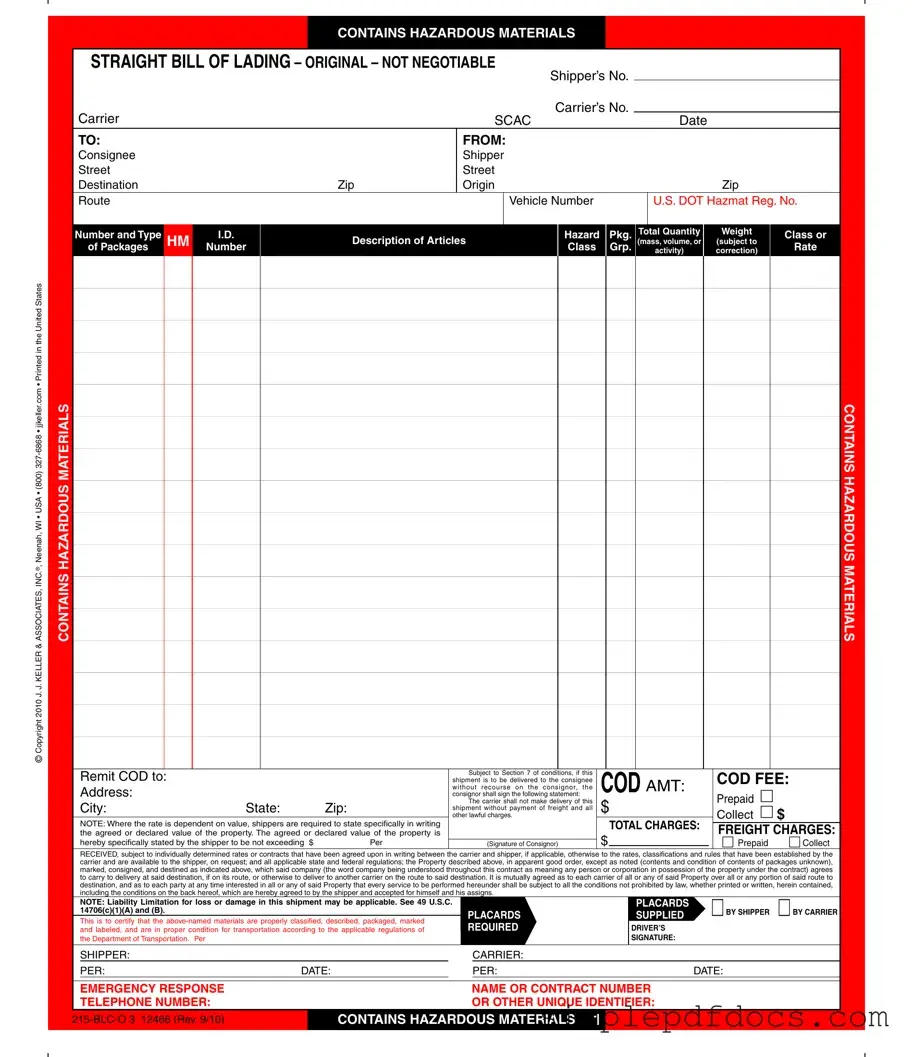The Hazard Bill of Lading is a crucial document in the transportation of hazardous materials, ensuring that both shippers and carriers adhere to safety and regulatory standards. This form serves as a contract between the shipper and the carrier, detailing essential information such as the shipper's and consignee's addresses, the description of the hazardous materials being transported, and their respective classifications. It also outlines the total quantity and weight of the shipment, along with any applicable freight charges. Notably, the form includes important sections regarding liability limitations, which specify the carrier's responsibilities in the event of loss or damage. Additionally, it highlights the necessity for proper packaging and labeling of hazardous materials to comply with Department of Transportation regulations. The Hazard Bill of Lading also addresses payment terms, including options for prepaid or collect charges, and emphasizes the shipper's obligation to provide accurate information regarding the nature of the goods being shipped. By understanding the components of this form, parties involved in the transportation of hazardous materials can better navigate the complexities of shipping while ensuring compliance and safety throughout the process.
